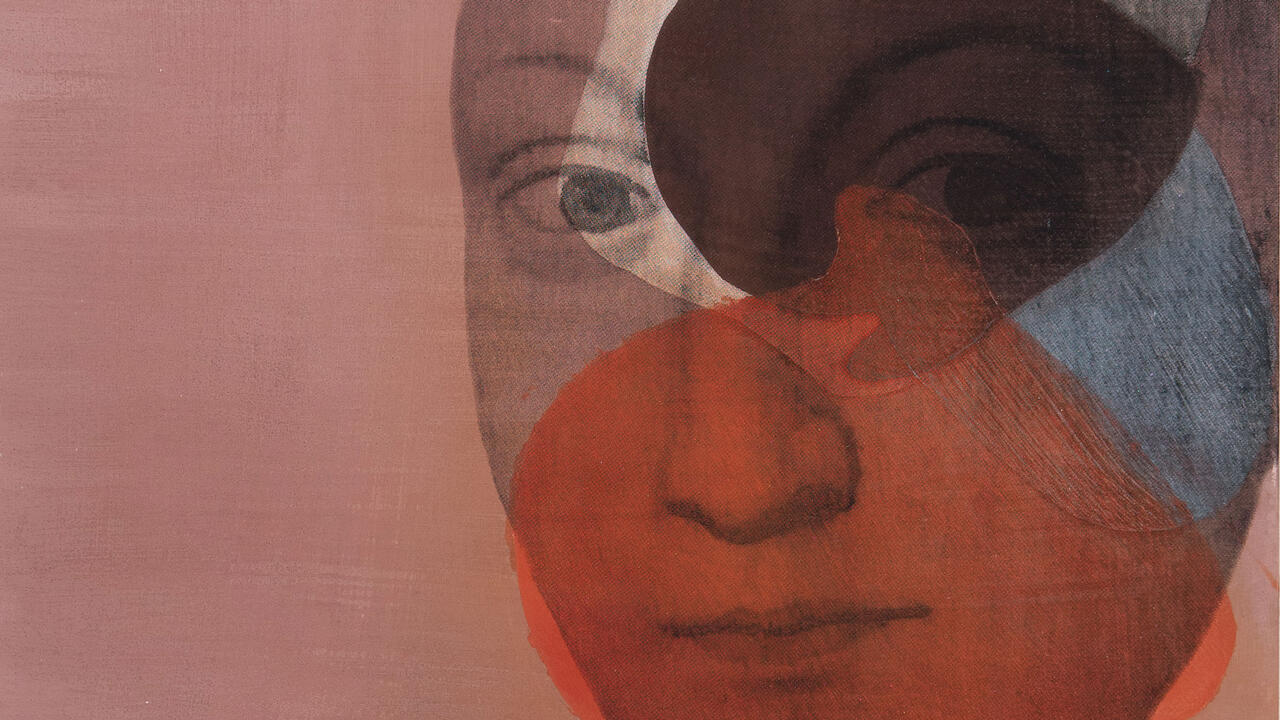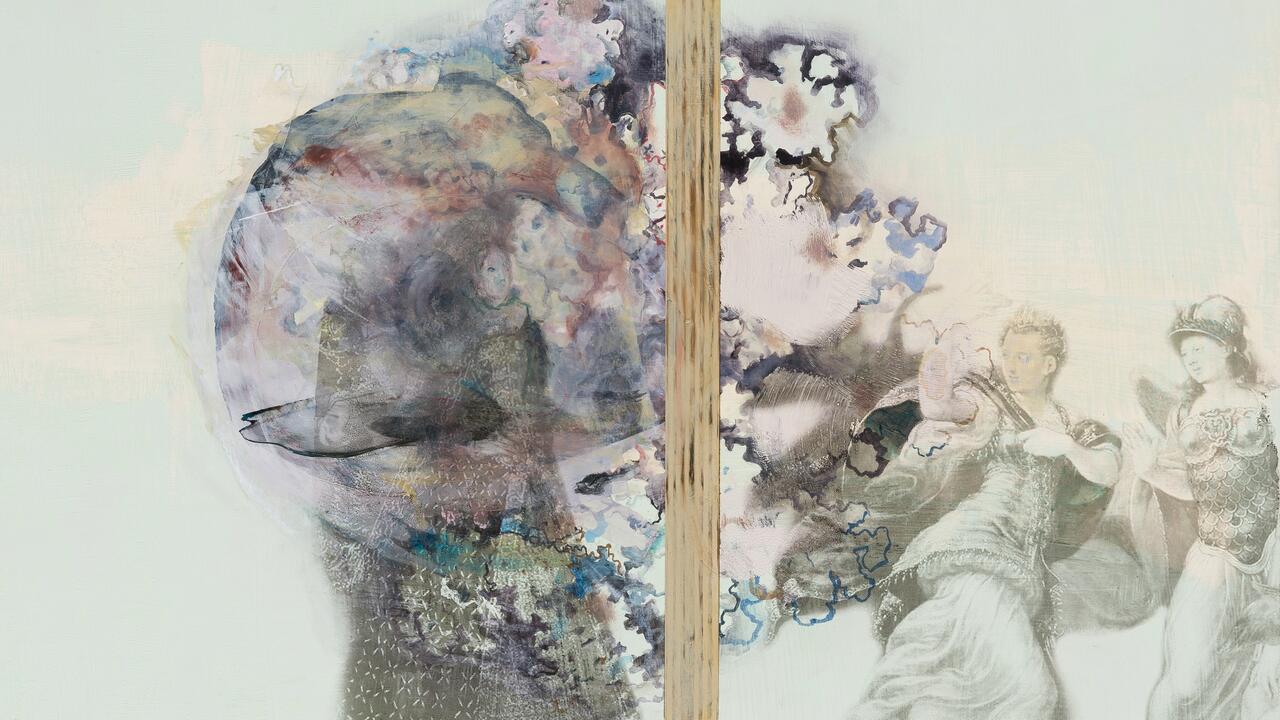Brian Jungen
Owls, Inuits and cultural collision; museums, marketing and clichés
Owls, Inuits and cultural collision; museums, marketing and clichés

In 1963 an Inuit artist created a doll that the Canadian government later tried to market as a symbol of the country. As it looked vaguely like an owl it was called Ookpik, the Inuit word for snowy owl. Cute, made from fur – usually seal, sometimes wolf – and with a plaintive gaze big enough to reflect the hopes of a fledgling culture, this small, slapdash Frankenstein was described in a contemporary promotional song as ‘native and new and bi-cultural, too’.
Brian Jungen is in the business of making Ookpik antidotes. His sculptures and installations may be equally hybrid things, but while the Ookpik was a tiny object recruited to fix and define the identity of a vast, fragmented country, Jungen creates objects whose beauty rests in their power to resist labels. He rips apart ideas, cultures and objects, then wraps up the mess in exquisite, slippery surfaces. The Ookpik took on a mission to purify; Jungen is bent on contamination.
A prophetic note was struck over 100 years ago, when a French fur trader bestowed a nickname on Jungen’s thumbless great-great-grandfather. The trader, perhaps the campfire wit, noticed the missing digit on this senior member of the Dane-za nation, and dubbed him Pouce-Coupe, or cut thumb, still the family surname on the maternal, aboriginal side of his family (and the name of the town in the north-east corner of British Columbia where some of them live).
The anecdotal label in a foreign language is, of course, a gruffly typical example of colonial violence, but Jungen tells this story with a whiff of delight and amazement, revelling in its absurdity. Even if the tale is apocryphal, it’s a good yarn, both fruitful and cruel. And this collision between European and aboriginal Canadians is the car wreck that Jungen has refused to look away from, and which provides much of the subject matter for his work.
A day of Manhattan sightseeing prompted his first brainwave. After a visit to the American Museum of Natural History, with its dusty cupboards stuffed with masks and artefacts from Canada’s north-west coast, he went across the park to the Metropolitan Museum of Art, before rounding off the day at Niketown, that anti-sanctuary of glitz and newness. All these elements – anthropology, art history, consumerism – came together about a month later back in Canada. He went to a local athletics shop, bought some Nike Air Jordans and took them back to his studio, where he tore them up and reassembled them, transforming a shoe synonymous with sweatshops, fame, wealth, inequality and envy into objects reminiscent of a Haida or Kwakwak’awakw mask. He called the series ‘Prototypes for New Understanding’ (1998–2005) after the process that designers must go through when they present a market ‘prototype’ to corporate box-tickers.
Museums and marketing departments transform mundane things into objects of reverence, but so do artists. Questions of value and authenticity are central here. Although Jungen’s ‘Prototypes’ look like north-west coast masks, they are neither reworkings of a tradition nor direct parodies. Jungen has no direct cultural or family link to the people who made and still make – mostly for the tourist market – these Haida masks. He plays with a cliché of aboriginal culture, corrupting its so-called authenticity with the flash, trans-cultural blandness of Nike. For ‘Talking Stick’ (2005), a similar series, Jungen transformed baseball bats into objects that look like north-west-coast talking sticks – a kind of hand-held totem pole that gives the person holding it the power to speak to an assembled group. Instead of thunderbirds and killer whales, however, Jungen’s sticks are carved with ‘Work to Rule’ and other political slogans. In a game of baseball everyone holds their breath in anticipation of what the person holding the bat will say or do; similarly, a talking stick, placard or manifesto is lifeless unless gripped with conviction.
Jungen’s work gives form to one of Hamlet’s best aphorisms: there is nothing either good or bad but thinking makes it so. Shapeshifter (2000), Cetology (2002) and Vienna (2003) are immense yet elegant sculptures that look like the whale skeletons you might encounter in a natural history museum. While the beautiful, seemingly natural forms stir our awe and wonder, we may recoil in contempt at the busted white plastic lawn chairs that form their skeletons. Jungen’s transformations show that our reaction to a thing lies in thoughts provoked by its surface and presentation as much as any understanding of its essence.
About the same time that Modernism was brewing in Europe, some of Jungen’s ancestors signed a treaty that promised them and their descendants five bucks and a handshake every July. It’s not a lot of money these days, yet he still likes to collect it from the local Royal Canadian Mounted Police officer when he goes home for the annual rodeo. The five-dollar handshake is part of his history, one of the many hyphens that link the fabric of his identity together. A compromise for purists, for Jungen the hyphen is a lightning bolt of inspiration.
















